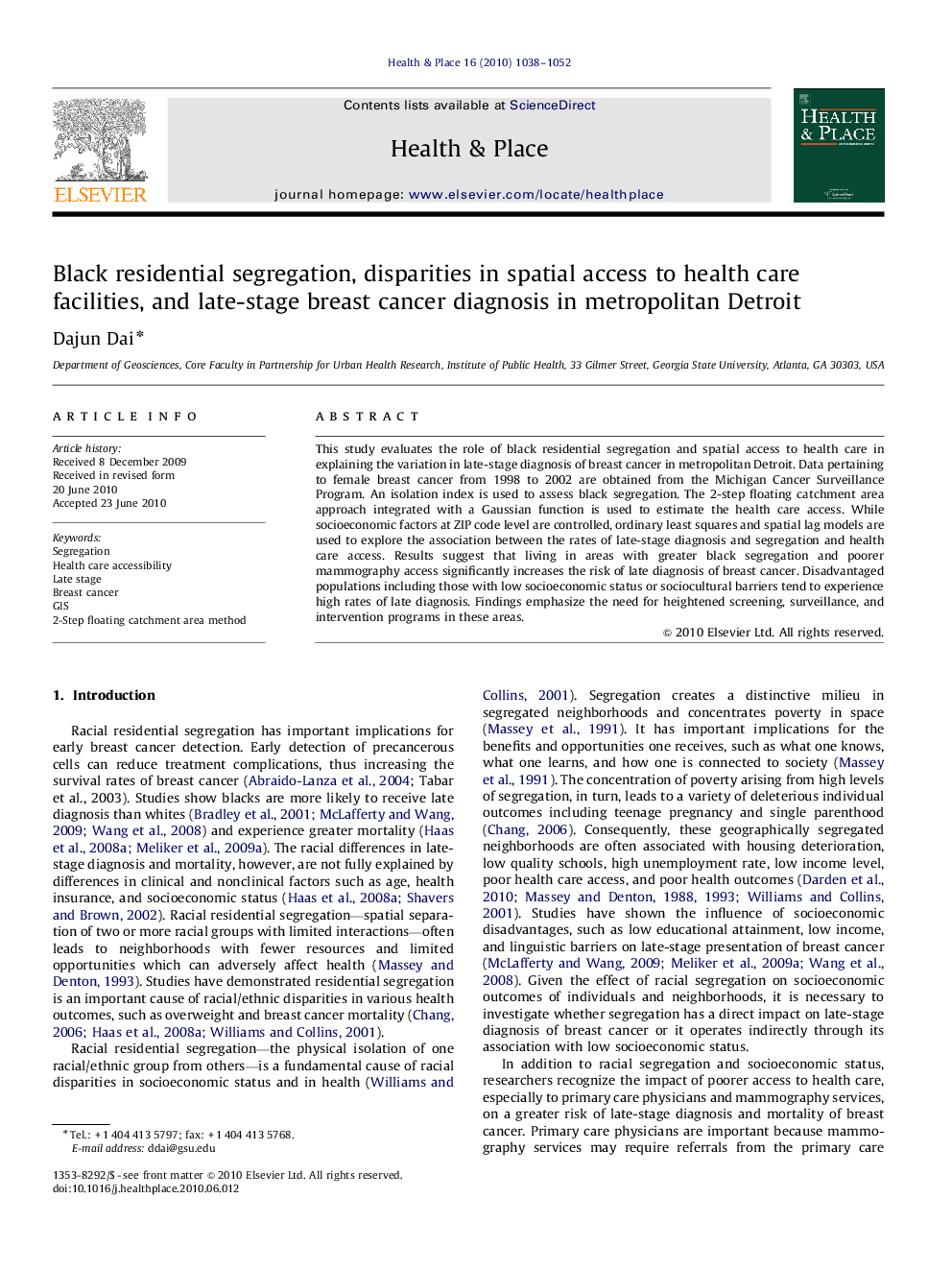| Article ID | Journal | Published Year | Pages | File Type |
|---|---|---|---|---|
| 10502756 | Health & Place | 2010 | 15 Pages |
Abstract
This study evaluates the role of black residential segregation and spatial access to health care in explaining the variation in late-stage diagnosis of breast cancer in metropolitan Detroit. Data pertaining to female breast cancer from 1998 to 2002 are obtained from the Michigan Cancer Surveillance Program. An isolation index is used to assess black segregation. The 2-step floating catchment area approach integrated with a Gaussian function is used to estimate the health care access. While socioeconomic factors at ZIP code level are controlled, ordinary least squares and spatial lag models are used to explore the association between the rates of late-stage diagnosis and segregation and health care access. Results suggest that living in areas with greater black segregation and poorer mammography access significantly increases the risk of late diagnosis of breast cancer. Disadvantaged populations including those with low socioeconomic status or sociocultural barriers tend to experience high rates of late diagnosis. Findings emphasize the need for heightened screening, surveillance, and intervention programs in these areas.
Related Topics
Health Sciences
Medicine and Dentistry
Public Health and Health Policy
Authors
Dajun Dai,
